Analysis¶
Please, see the data preparation tutorial for understand how to prepare data for this functions.
Load data¶
import pandas as pd
df = pd.read_csv('example_datasets/train.csv')
First steps¶
In this tutorial, we will describe the onboarding lost-passed case.
Goal
Our goal is to detect interface elements/screens of an app at which users’ engagement drops significantly and induces them to leave the app without account registration.
Tasks
Collect data
Prepare data
Analyze data
Build pivot tables
Visualize users path in the app
Build the classifier
- Classifier helps you to pick out specific users paths
- Classifier allows estimating the probability of the user’s leaving from the app based on his current path. One can use this information to dynamically change the content of the app to prevent that.
Expected results
- You will identify the most “problematic” elements of the app
- You will get the classifier which will allow you to predict the user’s leaving from the app based on the current user’s behavior
Import retentioneering framework¶
First of all, we need to import package module
from retentioneering import analysis
After that we shoud select the export folder in config (you can leave it empty and the script will create a folder with current timestamp). Note: if you don’t want to leave this field empty, you have to specify an existing directory, because the script will not create it.
settings = {
'export_folder': './experiments/new_experiment'
}
or
settings = {}
Events` probability dynamics¶
desc = analysis.get_desc_table(df,
settings=settings,
plot=True,
target_event_list=['lost',
'passed'])
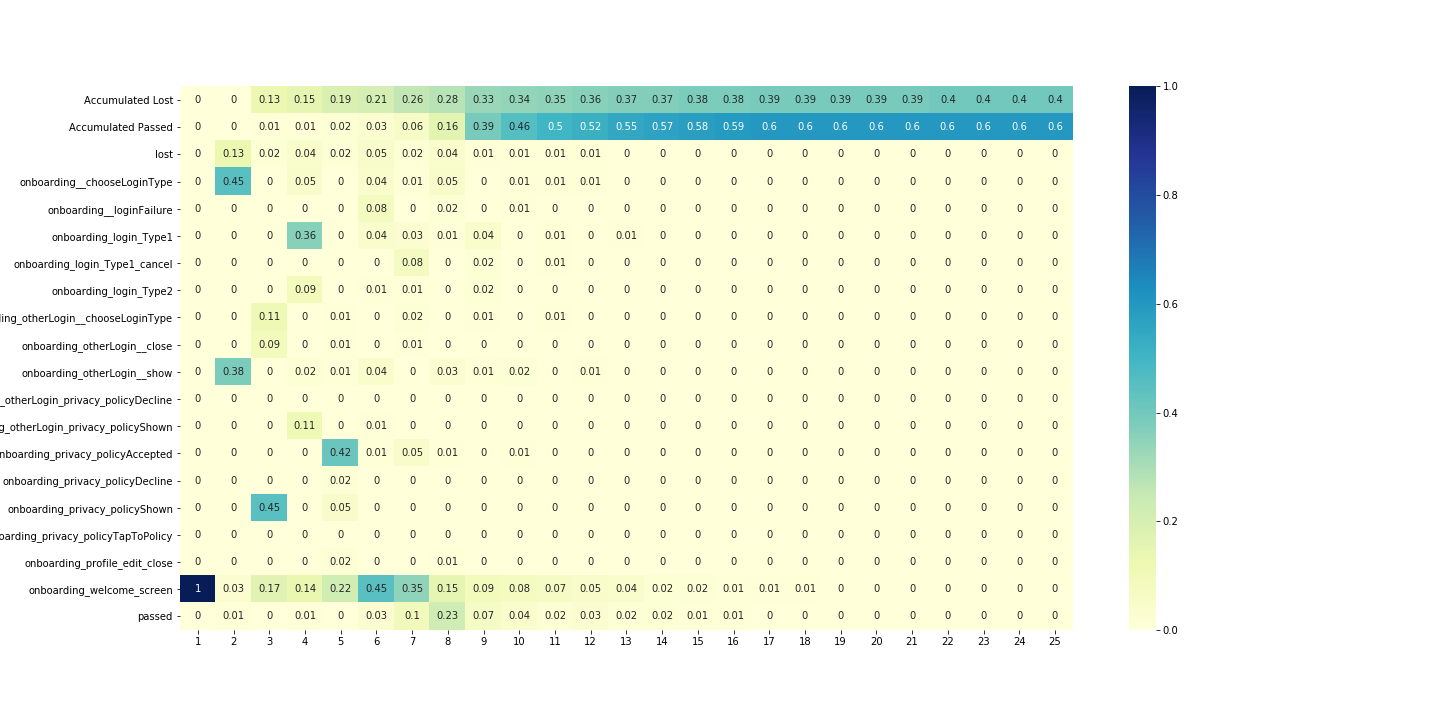
- Each column of the table corresponds to a sequence number
- of the user’s steps from the path and each row corresponds to event name.
Values of the table show the probability that the user choose the appropriate event at the appropriate step.
- It’s difficult to make a complex analysis from that table so it is better
- to split our users to those who leave the app and those who passed.
Difference in passed and lost users behaviour¶
# find users who get lost
lost_users_list = df[df.event_name == 'lost'].user_pseudo_id.unique()
# create filter for lost users
filt = df.user_pseudo_id.isin(lost_users_list)
# filter data for lost users trajectories
df_lost = df[filt]
# filter data for passed users trajectories
df_passed = df[~filt]
Plot dynamics for different groups.
Plot for group of users who have lost event:
desc_loss = analysis.get_desc_table(df_lost,
settings=settings,
plot=True,
target_event_list=['lost',
'passed'])
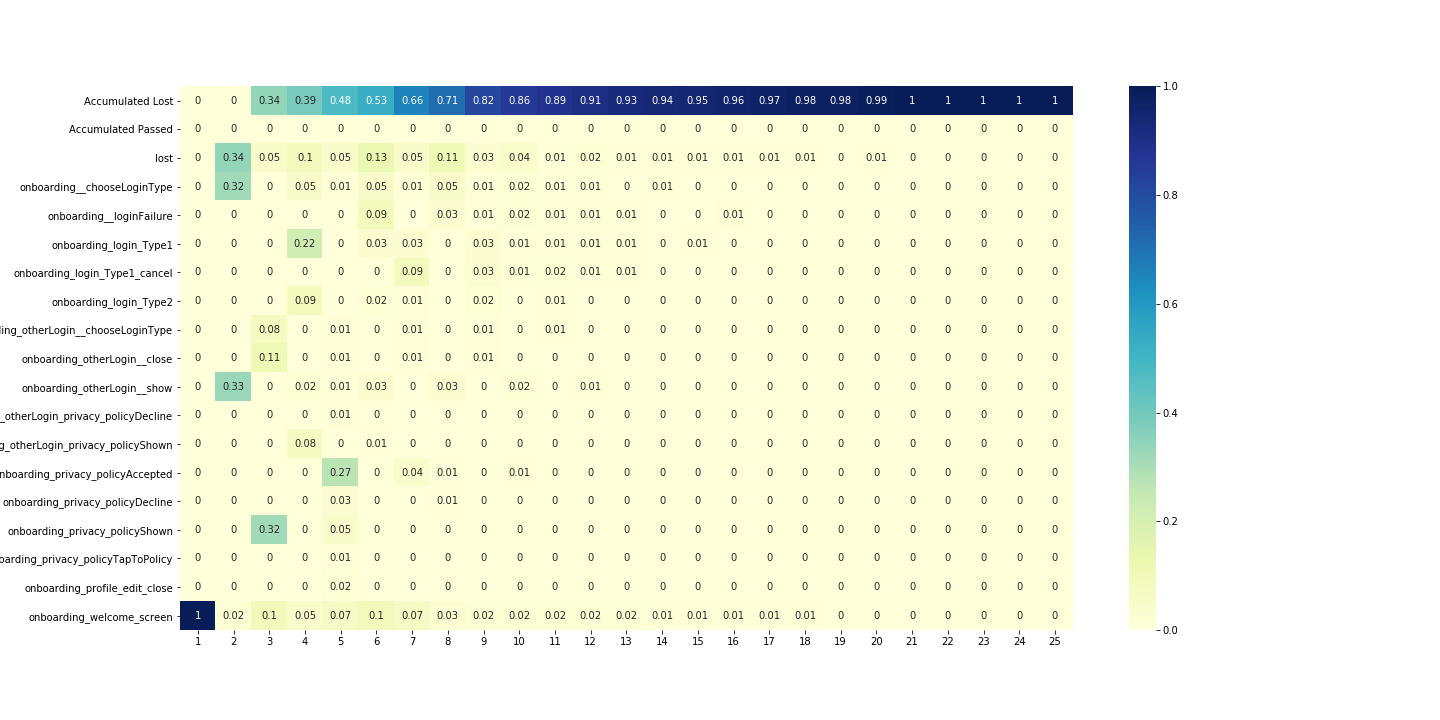
Plot for group of users who have passed event:
desc_passed = analysis.get_desc_table(df_passed,
settings=settings,
plot=True,
target_event_list=['lost',
'passed'])
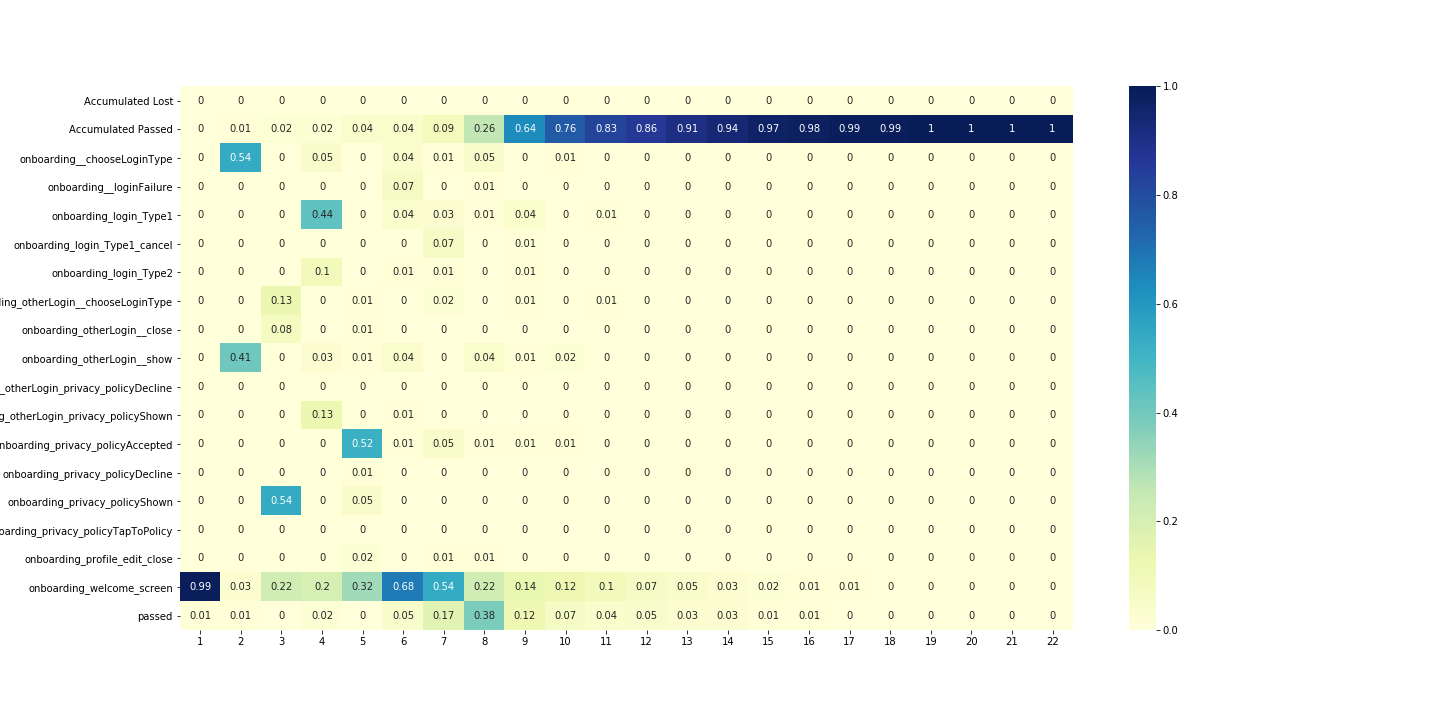
diff_df = analysis.get_diff(desc_loss,
desc_passed,
settings=settings,
precalc=True)
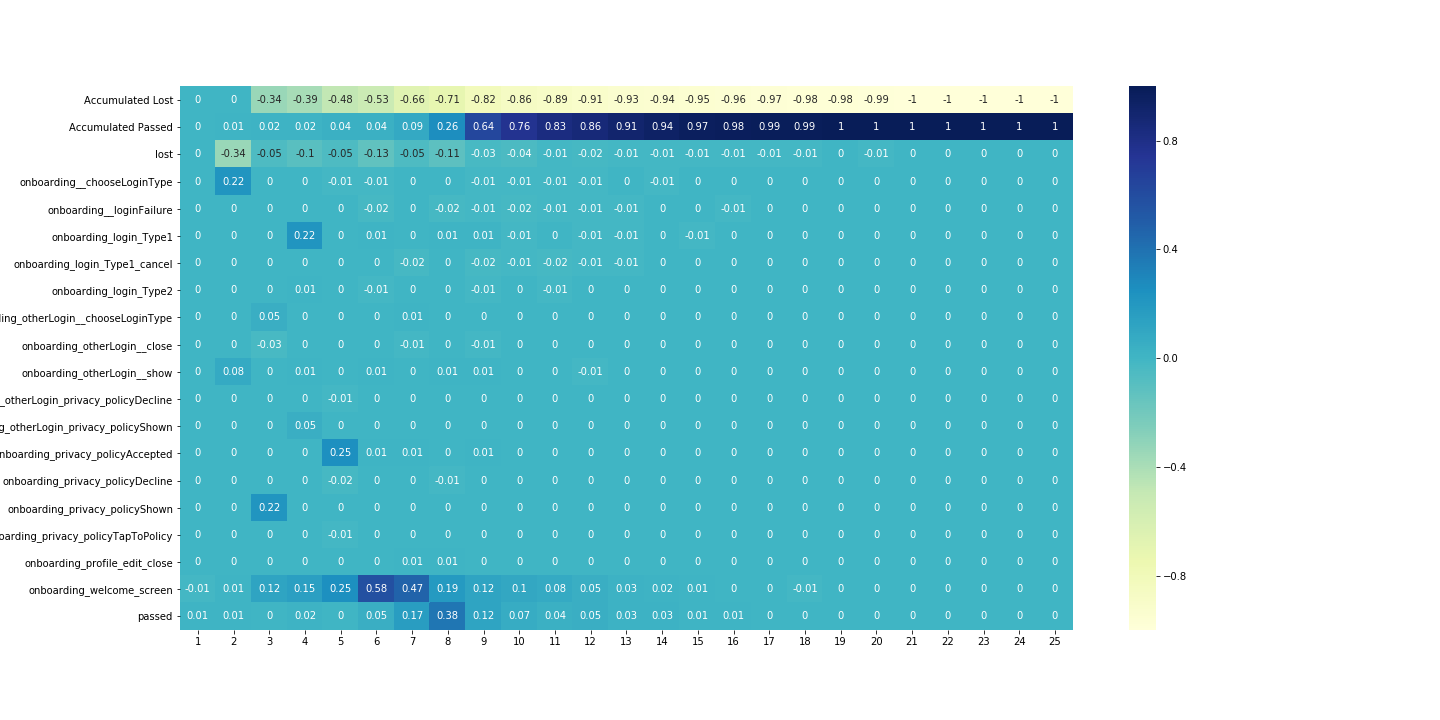
Agregates over user transitions¶
Lets aggregate our data over users transitions:
agg_list = ['trans_count', 'dt_mean', 'dt_median', 'dt_min', 'dt_max']
df_agg = analysis.get_all_agg(df, agg_list)
df_agg.head()
Out:
event_name next_event trans_count ...
0 onboarding__chooseLoginType lost 1 ...
1 onboarding__chooseLoginType onboarding_login_Type1 414 ...
2 onboarding__chooseLoginType onboarding_login_Type2 159 ...
3 onboarding__chooseLoginType onboarding_privacy_policyShown 2133 ...
4 onboarding__loginFailure lost 1 ...
Now we can see which transitions take the most time and how often people have used different transitions.
We could choose the 10 longest users’ paths:
df_agg.sort_values('trans_count', ascending=False).head(10)
Out:
event_name next_event trans_count ...
84 onboarding_welcome_screen onboarding_welcome_screen 5021 ...
85 onboarding_welcome_screen passed 2330 ...
3 onboarding__chooseLoginType onboarding_privacy_policyShown 2133 ...
79 onboarding_welcome_screen onboarding__chooseLoginType 1938 ...
67 onboarding_privacy_policyShown onboarding_login_Type1 1675 ...
11 onboarding_login_Type1 onboarding_privacy_policyAccepted 1666 ...
82 onboarding_welcome_screen onboarding_otherLogin__show 1601 ...
62 onboarding_privacy_policyAccepted onboarding_welcome_screen 1189 ...
78 onboarding_welcome_screen lost 1043 ...
47 onboarding_otherLogin__show onboarding_welcome_screen 876 ...
You can see the events where users spend most of their time. It seems reasonable to analyze only popular events to get stable results.
Adjacency matrix¶
The adjacency matrix is the representation of the graph. You can read more about it on the`wiki <https://en.wikipedia.org/wiki/Adjacency_matrix>`__:
adj_count = analysis.get_adjacency(df_agg, 'trans_count')
adj_count
Out:
... onboarding_login_Type1 onboarding_privacy_policyShown ...
onboarding_login_Type1 ... 0.0 0.0 ...
onboarding_privacy_policyShown ... 1675.0 0.0 ...
onboarding__loginFailure ... 0.0 0.0 ...
onboarding_privacy_policyTapToPolicy ... 0.0 0.0 ...
onboarding_welcome_screen ... 0.0 0.0 ...
Users clustering¶
Also, we could clusterize users by the frequency of events in their path:
countmap = analysis.calculate.calculate_frequency_map(df, settings)
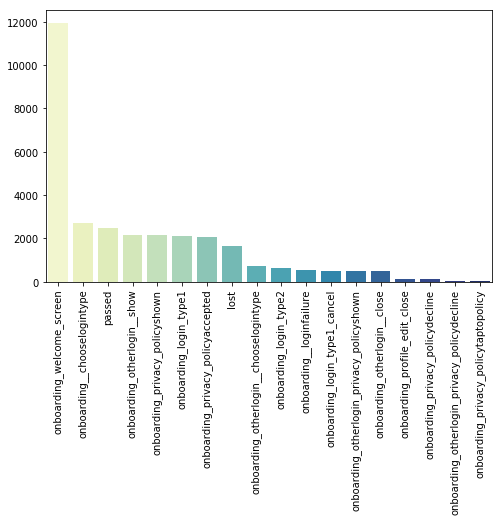
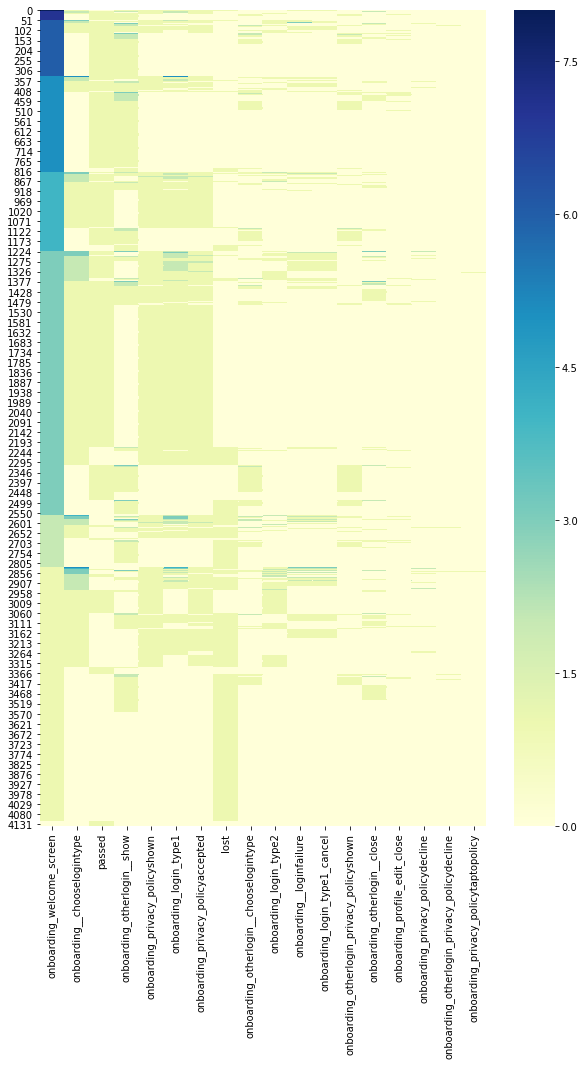
On that plot, we can see that some users have pretty close frequencies of different functions usage.
And we can see that it is useful to separate groups with different conversion rates:
analysis.utils.plot_clusters(df, countmap, n_clusters=5, plot_cnt=2)
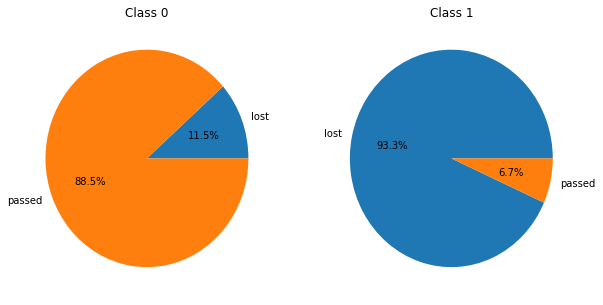
Graph visualization¶
We have two options to plot the graphs:
1. With python (this is local)
2. With our API
(in that case, you'll send your data to our servers, but we don't save it and using only for visualization)
In the second option, the plot looks much better and obvious.
analysis.utils.plot_graph_python(df_agg, 'trans_count', settings)
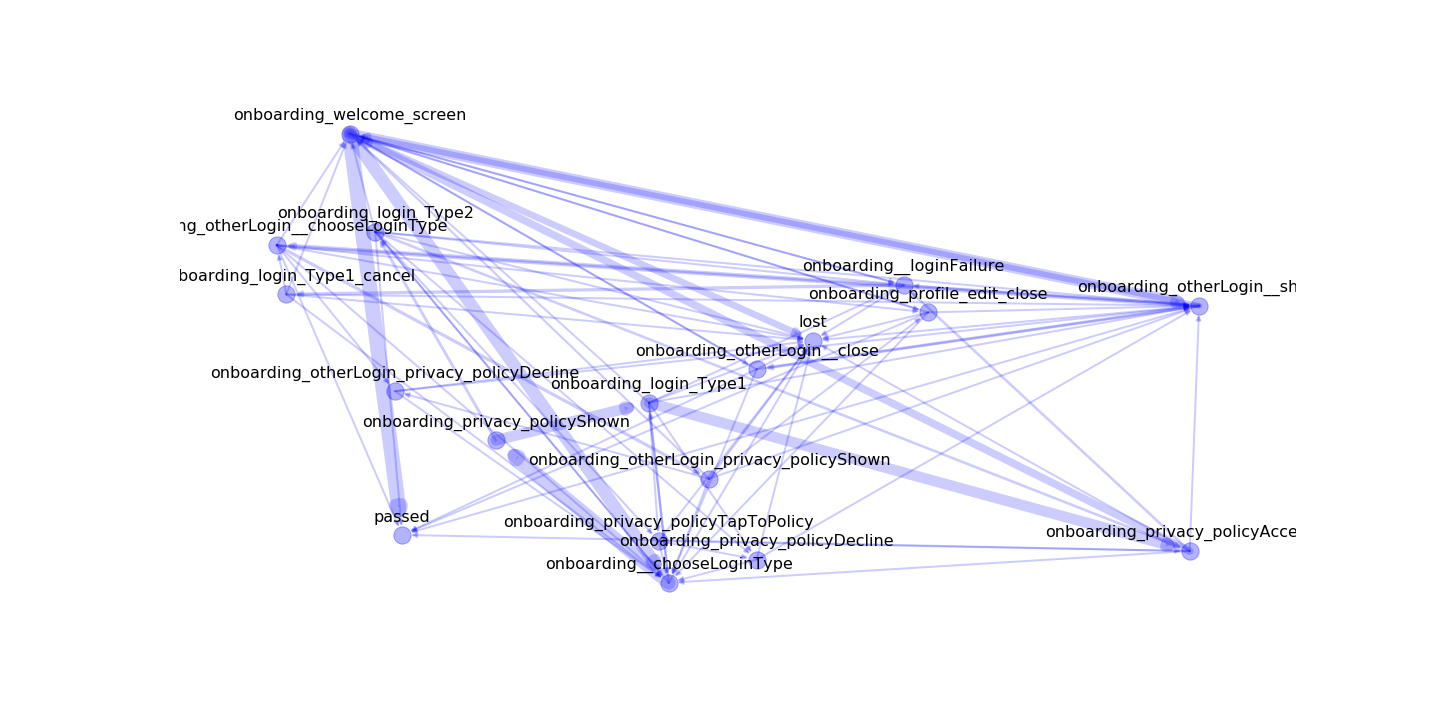
from retentioneering.utils.export import plot_graph_api
plot_graph_api(df_lost, settings)
Lost-Passed classifier¶
Model fitting¶
clf = analysis.Model(df, target_event='lost', settings=settings)
clf.fit_model()
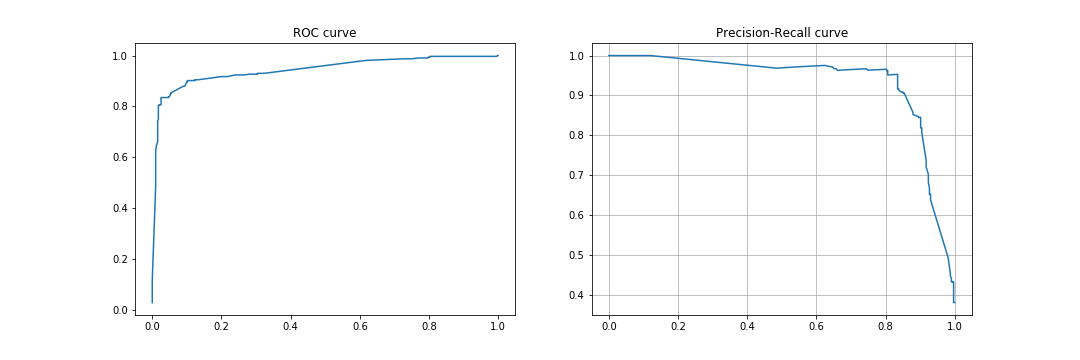
It returns metrics of quality of the model.
Model inference¶
We have data for new users, who are not passed or lost already.
Lets load it into pandas DataFrame:
test_data = pd.read_csv('example_datasets/test.csv')
Now we can predict probabilities for new users:
prediction = clf.infer(test_data)
prediction.head()
Out:
user_pseudo_id not_target target
0 000bf8e1812a0335c7e65d52b3f6e816 0.976125 0.023875
1 00275391998b3f87d798f6e7a1ec5c15 0.757970 0.242030
2 004ecbe8a710f3c7b5b3cbc9bc0c74b2 0.727521 0.272479
3 00530441b09d5494b09e936a97d5cb99 0.988654 0.011346
4 005502038cec478faf343fe54310a848 0.592515 0.407485
Understanding your data¶
You can plot projection of users trajectories to understand how your data looks likes:
clf.plot_projections()
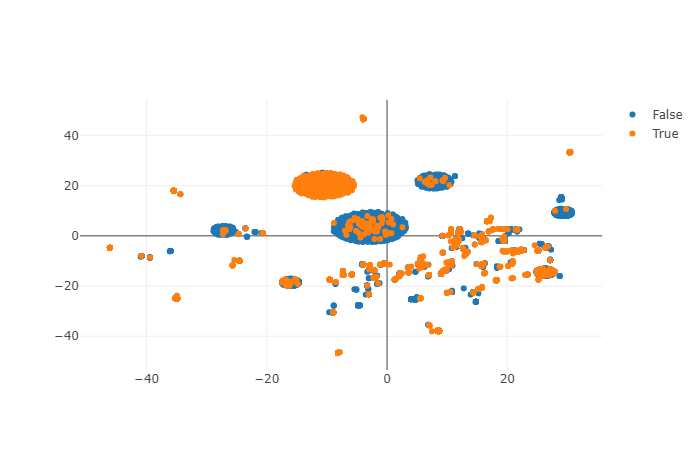
Understanding prediction of your model¶
Also, you can plot results of the model inference over that projections to understand the cases where your model fails:
clf.plot_projections(sample=data.event_name.values, ids=data.user_pseudo_id.values)
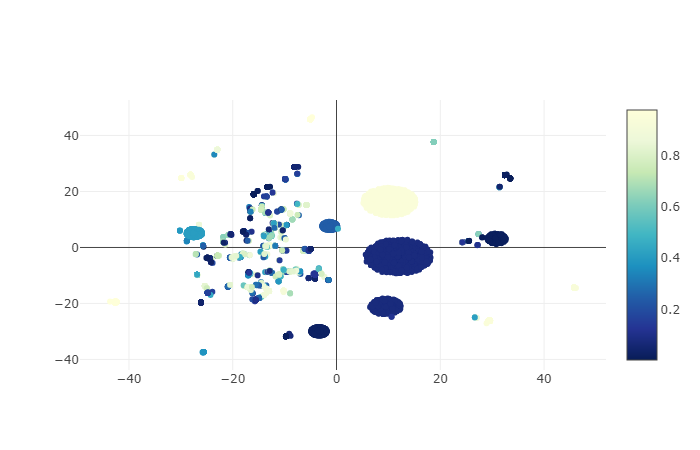
Visualizing graph for area¶
From the previous plot, you can be interested in what trajectories has high conversion rates.
You can select the area on that plot and visualize it as a graph:
# write coordinates bbox angles
bbox = [
[-4, -12],
[8, -26]
]
clf.plot_cluster_track(bbox)
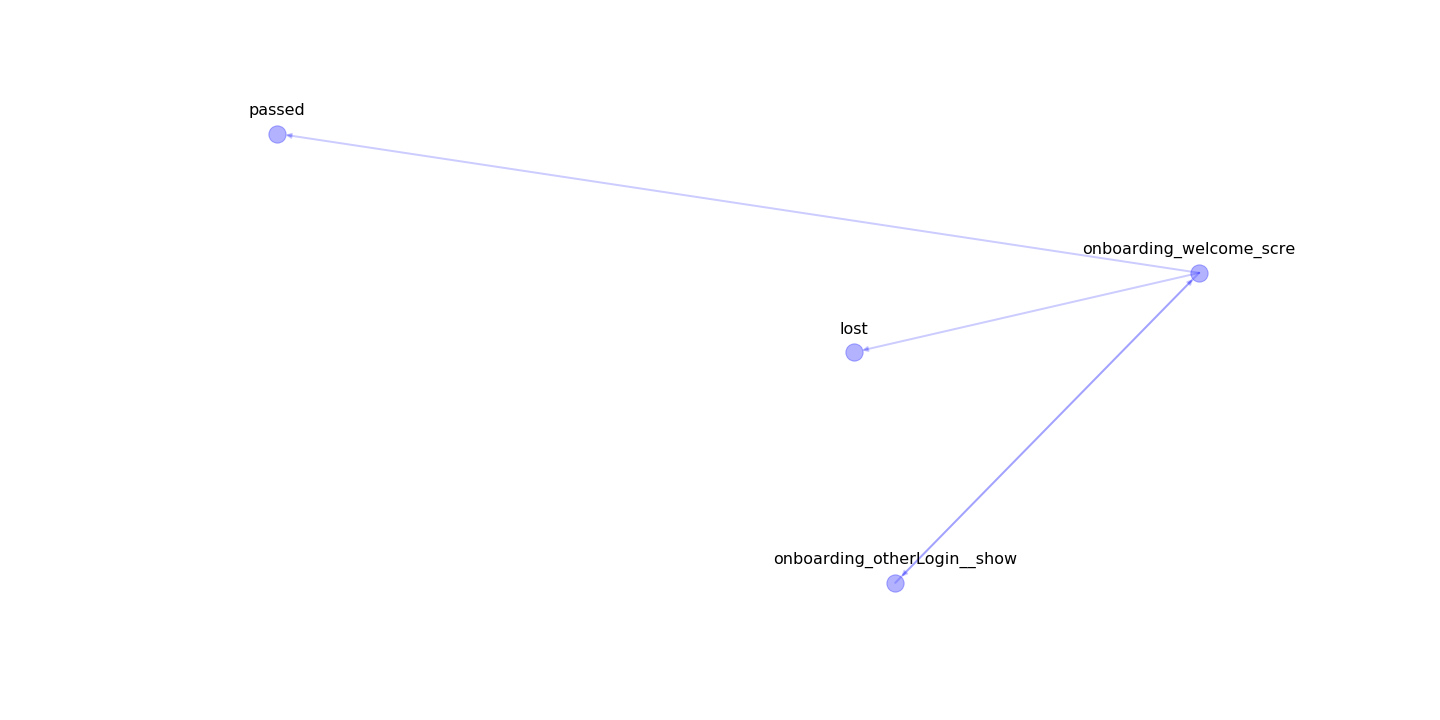
The most important edges¶
You could find what was the most important edges and nodes in your model for debugging (e.g. it helps you to understand ‘leaky’ events) or to find problem transitions in your app.
Edges:
imp_tracks = clf.build_important_track()
imp_tracks[imp_tracks[1].notnull()]
Out:
0 1
0 onboarding__chooselogintype onboarding_login_type1
1 onboarding_login_type1 onboarding__loginfailure
2 onboarding__chooselogintype onboarding_login_type2
3 onboarding_login_type2 onboarding_otherlogin__show
5 onboarding__loginfailure onboarding_login_type1_cancel
Nodes:
imp_tracks[imp_tracks[1].isnull()][0].values
Out:
array(['onboarding__loginfailure', 'onboarding_login_type1',
'onboarding_login_type1_cancel', 'onboarding_login_type2',
'onboarding_otherlogin_privacy_policyshown',
'onboarding_privacy_policydecline', 'onboarding_welcome_screen'],
dtype=object)